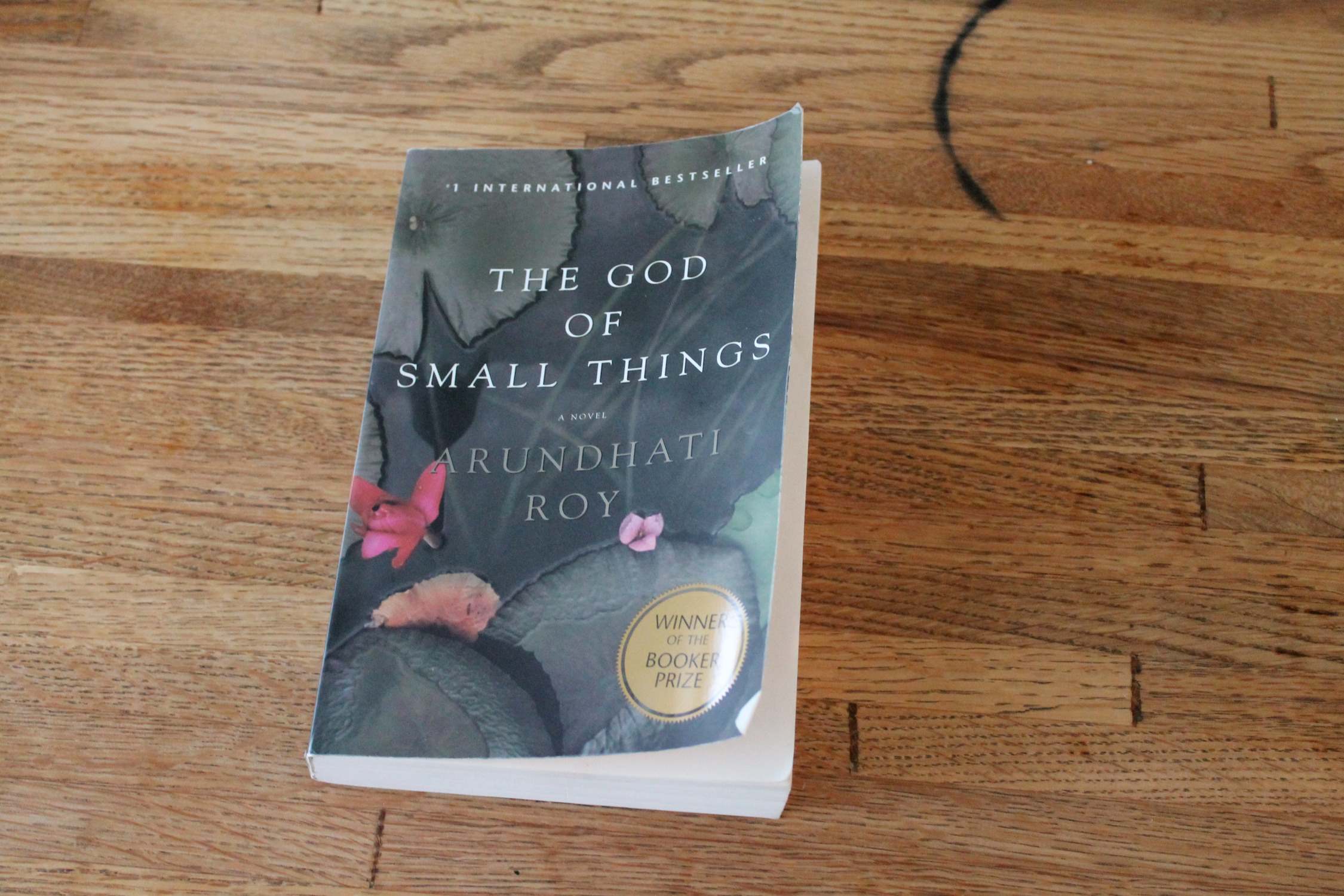
Arundhati Roy’s debut novel, The God of Small Things, has captivated readers around the world with its lyrical prose, complex characters, and poignant exploration of love, loss, and social hierarchies. Published in 1997, the novel quickly gained critical acclaim and went on to win the prestigious Man Booker Prize. In this article, we delve into the fascinating world of The God of Small Things and uncover 19 intriguing facts about the book and its author. From the inspiration behind the story to the cultural and political themes it tackles, these facts shed light on the genius of Roy’s writing and the impact her work has had on contemporary literature. So, let’s dive into the enchanting realm of The God of Small Things and discover the secrets within.
Key Takeaways:
- Arundhati Roy’s debut novel, The God of Small Things, won the prestigious Booker Prize in 1997, captivating readers with its poignant story of love, loss, and societal constraints in Kerala, India.
- The God of Small Things continues to inspire and resonate with readers worldwide, addressing social issues, forbidden love, and the complexities of family dynamics through Roy’s poetic and evocative writing style.
The God of Small Things won the Booker Prize in 1997.
Arundhati Roy’s debut novel, The God of Small Things, catapulted her to literary stardom when it won the prestigious Booker Prize in The novel is set in Kerala, India, and tells a poignant story of love, loss, and societal constraints.
Arundhati Roy started writing The God of Small Things while working as a screenwriter.
Before embarking on her journey as a novelist, Roy worked as a screenwriter for Indian cinema. It was during this time that the idea for The God of Small Things began to take shape in her mind. The novel showcases her exceptional storytelling prowess.
The God of Small Things was an instant bestseller.
Upon its release, The God of Small Things quickly captured the imagination of readers worldwide. The novel’s lyrical prose, vivid descriptions, and exploration of complex themes struck a chord with a diverse audience, propelling it to the top of bestseller lists.
The book addresses social issues such as caste and gender inequality.
Arundhati Roy fearlessly delves into social issues prevalent in Indian society, such as caste discrimination and gender inequality. Through her characters, she sheds light on the complexities and injustices experienced by marginalized individuals.
The God of Small Things was banned in some Indian states.
Due to its frank depiction of sensitive themes and its portrayal of taboo relationships, The God of Small Things faced bans in certain states in India. However, the novel also garnered immense support and praise from readers who appreciated Roy’s bold storytelling.
Arundhati Roy took nearly five years to complete the novel.
The process of writing The God of Small Things was a labor of love for Arundhati Roy. It took her almost five years to meticulously craft the intricate storyline, develop the characters, and polish the exquisite language that has become her trademark.
The God of Small Things explores the concept of forbidden love.
In the novel, Roy explores the complexities of forbidden love through the forbidden relationship between the main characters, Estha and Rahel. She delves into the consequences and sacrifices that individuals make when they dare to defy societal norms.
Arundhati Roy’s writing style in The God of Small Things is poetic and evocative.
Arundhati Roy’s prose in The God of Small Things is often described as poetic and lyrical. Her use of vivid imagery and sensory details allows readers to immerse themselves fully in the world she has created.
The God of Small Things is influenced by Roy’s own childhood experiences.
Roy drew inspiration from her own childhood and experiences growing up in Kerala. The nuances and cultural references in the book stem from her personal memories, contributing to the authenticity and richness of the storytelling.
Arundhati Roy’s portrayal of childhood innocence is a recurring theme in the novel.
The God of Small Things weaves together multiple layers of storytelling, but one recurring theme is the exploration of childhood innocence and the loss thereof. Roy beautifully captures the fragility and resilience of young minds amidst a turbulent adult world.
Roy’s characters in The God of Small Things are multi-dimensional and relatable.
Arundhati Roy creates characters that are vivid, flawed, and deeply human. Each character in the book has a unique narrative, allowing readers to connect and empathize with their struggles, dreams, and fears.
The novel presents a non-linear narrative structure.
Rather than following a traditional linear structure, The God of Small Things unfolds through a non-linear narrative, jumping back and forth in time. This narrative technique adds depth and layers to the story, enhancing the overall reading experience.
The God of Small Things explores the complexities of family dynamics.
Within the pages of The God of Small Things, Roy delves into the intricacies of family relationships. She delves into the bonds, secrets, and betrayals that shape individuals and impact their understanding of love and belonging.
The book delves into the stark inequalities in Indian society.
Arundhati Roy uses The God of Small Things to shed light on the stark inequalities that exist in Indian society. The novel explores how privilege, social class, and traditional hierarchies shape the lives of individuals, often leading to tragic consequences.
The God of Small Things is considered a modern classic of Indian literature.
Since its publication, The God of Small Things has been hailed as a modern classic of Indian literature. It continues to captivate readers with its powerful storytelling, thought-provoking themes, and emotional depth.
The novel has been translated into numerous languages.
The universal appeal of The God of Small Things has led to its translation into several languages, allowing readers from diverse cultural backgrounds to experience and appreciate Arundhati Roy’s masterpiece.
Arundhati Roy’s success with The God of Small Things led her to become a prominent activist.
Arundhati Roy’s literary success opened the doors for her to become a prominent social and political activist. She has used her platform to advocate for various causes, including environmental justice, human rights, and the rights of marginalized communities.
The God of Small Things embodies the power of storytelling.
The God of Small Things serves as a testament to the power of storytelling to challenge societal norms, provoke thought, and evoke a wide range of emotions. It is a testament to the enduring impact of literature and the ability of words to shape our understanding of the world.
The God of Small Things continues to inspire and resonate with readers around the world.
Decades after its initial publication, The God of Small Things continues to touch the hearts of readers worldwide. Its timeless themes, memorable characters, and exquisite prose ensure its place as a literary masterpiece that will be cherished for generations to come.
Arundhati Roy’s The God of Small Things is a work of literary brilliance that explores the complexities of human relationships, societal norms, and the pursuit of personal freedom. With its compelling narrative, vivid imagery, and thought-provoking themes, the novel has left an indelible mark on the literary landscape. Roy’s ability to seamlessly weave together a multi-layered story with profound insights into social issues has garnered her both critical acclaim and a devoted readership. The God of Small Things continues to captivate audiences around the world, cementing its status as a modern classic of Indian literature.
Conclusion
The God of Small Things by Arundhati Roy is a literary masterpiece that captivates readers with its compelling story, rich characters, and vivid depiction of Indian society. Through its poetic language and intricate narrative structure, the novel explores themes of love, loss, social hierarchies, and the power of small moments in shaping our lives. Roy’s exceptional storytelling skills and her ability to delve into the complexities of human emotions make The God of Small Things a must-read for anyone seeking a thought-provoking and emotionally gripping literary experience.
FAQs
1. Who is the author of The God of Small Things?
The God of Small Things is written by Arundhati Roy.
2. What is the genre of The God of Small Things?
The novel falls under the genre of contemporary fiction and is often classified as a postcolonial and literary fiction.
3. When was The God of Small Things published?
The novel was first published in 1997.
4. What are some major themes in The God of Small Things?
Themes explored in the novel include love, social inequality, family dynamics, cultural clashes, and forbidden relationships.
5. Has The God of Small Things won any awards?
Yes, The God of Small Things won the prestigious Man Booker Prize in 1997, making Arundhati Roy the first Indian woman to receive this honor.
Arundhati Roy's masterpiece offers a glimpse into the complexities of Indian society and the human experience. If you enjoyed this exploration of "The God of Small Things," consider diving into other works of Indian literature, such as Vikram Seth's "A Suitable Boy." Roy's novel also sheds light on social issues like discrimination, a topic that affects communities worldwide. For a change of pace, why not explore the world of sports and learn more about Gokulam Kerala FC, a fascinating football club from Roy's home state?
Was this page helpful?
Our commitment to delivering trustworthy and engaging content is at the heart of what we do. Each fact on our site is contributed by real users like you, bringing a wealth of diverse insights and information. To ensure the highest standards of accuracy and reliability, our dedicated editors meticulously review each submission. This process guarantees that the facts we share are not only fascinating but also credible. Trust in our commitment to quality and authenticity as you explore and learn with us.


